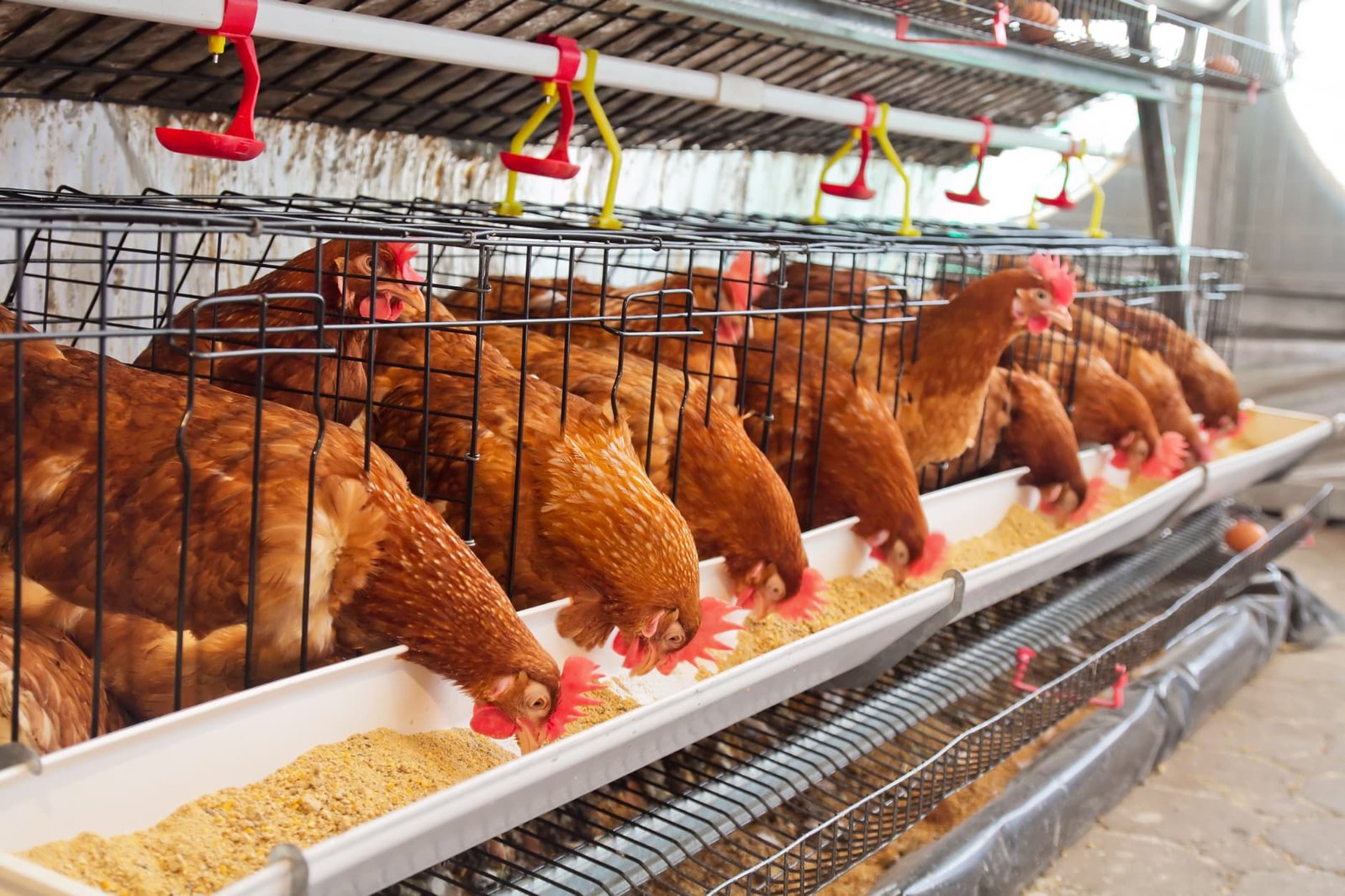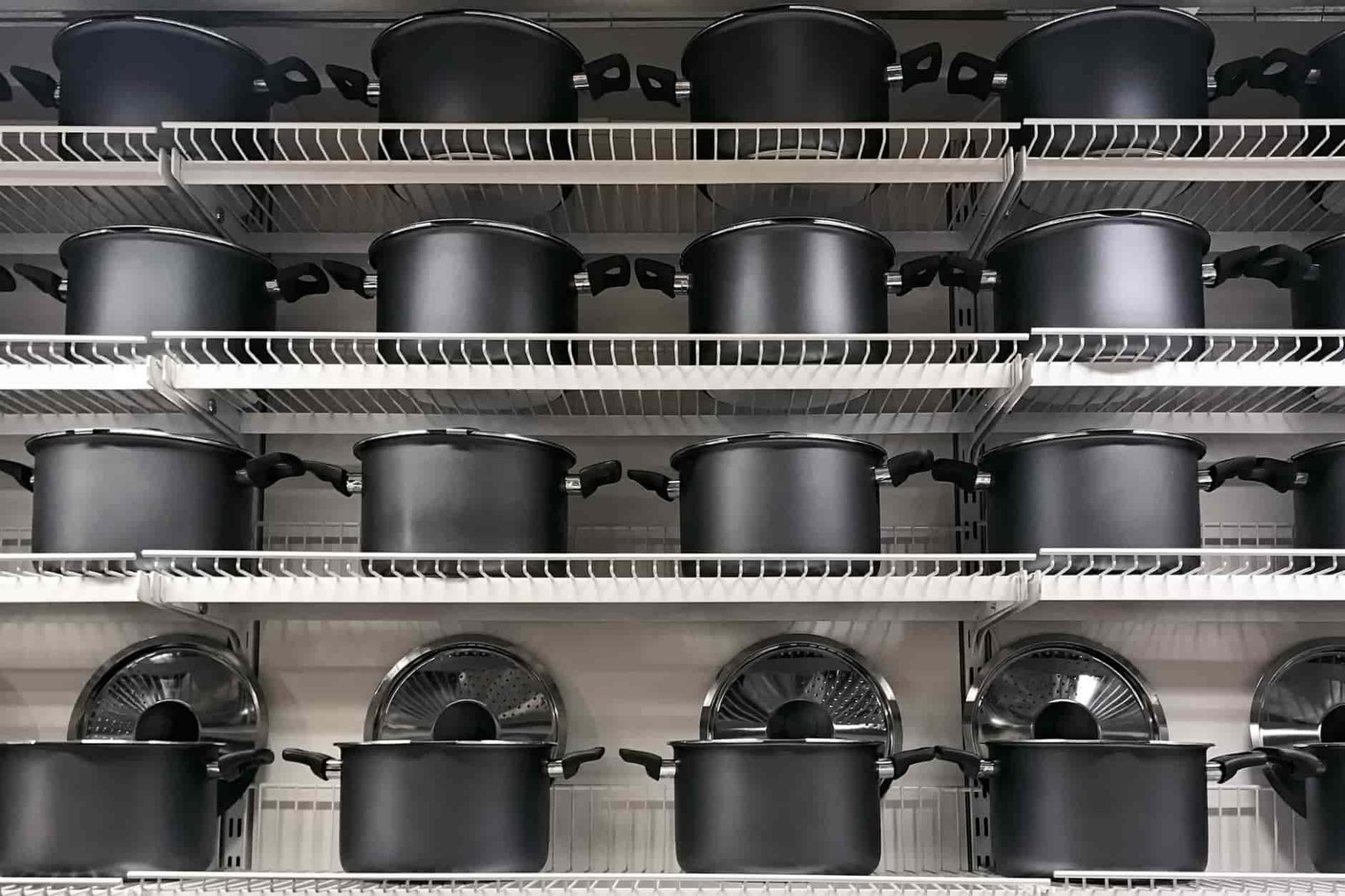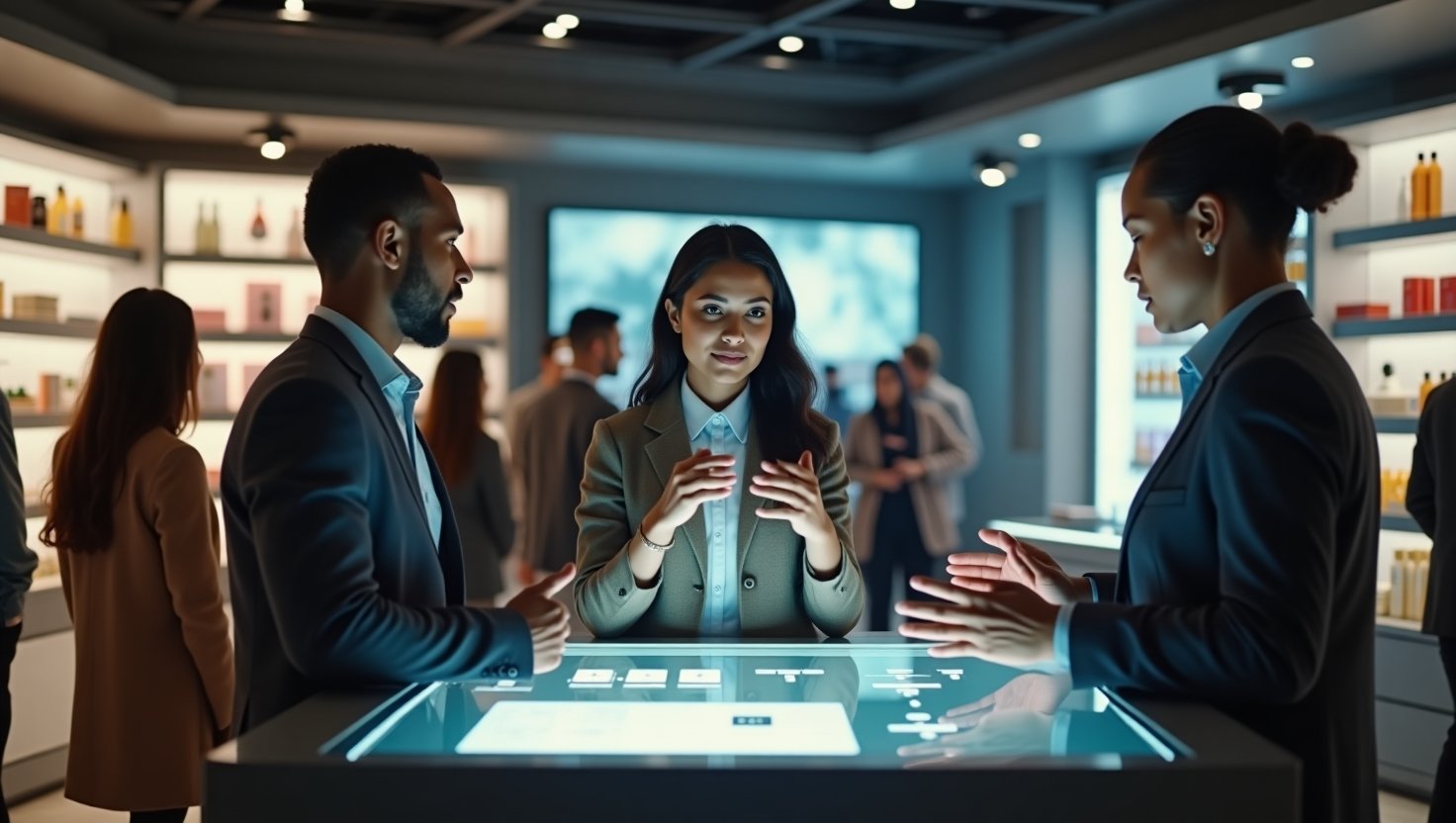In today’s highly competitive retail landscape, supermarkets must constantly find ways to stand out and attract customers. Effective merchandising is essential in achieving this goal, as it not only helps to create an appealing shopping environment but also drives sales and increases customer loyalty.
In this blog post, we will explore the art and science of merchandising and how supermarkets create product displays that drive sales. We will delve into the various factors that impact consumer behavior and buying decisions, as well as the strategies and techniques used by supermarkets to create effective product displays.
By the end of this post, you will have a deeper understanding of the importance of effective merchandising and how it can help supermarkets thrive in today’s competitive retail industry. So, let’s get started!
Understanding Consumer Behavior and Psychology of Buying
To create effective product displays that drive sales, supermarkets must first understand the behavior and psychology of their customers. Consumer behavior refers to the actions and decisions that customers make when purchasing products, while the psychology of buying refers to the emotional and psychological factors that influence those decisions.
One of the key factors that influence consumer behavior is the need for convenience. In today’s fast-paced world, customers value convenience above all else. They want to be able to find what they need quickly and easily, and they want the shopping experience to be as hassle-free as possible.
Retail merchandising refers to the art and science of creating attractive and engaging product displays that entice customers to make purchases.
Steffi’s Blog
Supermarkets can tap into this need for convenience by creating product displays that are easy to navigate and that highlight the most popular and in-demand items. By placing these items at eye level and in easy-to-find locations, supermarkets can make the shopping experience more convenient and appealing for customers.
Another important factor that influences consumer behavior is the desire for value. Customers want to feel like they are getting a good deal on their purchases, and they are more likely to buy items that are priced competitively or that offer added value, such as a discount or a free gift.
Supermarkets can leverage this desire for value by creating displays that highlight products that are on sale or that offer a special promotion. By using eye-catching signage and product displays, supermarkets can draw attention to these items and create a sense of urgency that encourages customers to make a purchase.
The psychology of buying is also an important factor in creating effective product displays. Customers are more likely to make a purchase when they feel emotionally connected to the product or when they perceive it to be of high quality.
Supermarkets can tap into this psychology by creating displays that highlight the features and benefits of their products, and that evoke positive emotions in customers. For example, a display of fresh fruits and vegetables might include signage that emphasizes the health benefits of eating a diet rich in fruits and vegetables, or that highlights the local and sustainable sourcing of the produce.
In conclusion, understanding consumer behavior and the psychology of buying is essential in creating effective product displays that drive sales. By tapping into the need for convenience, the desire for value, and the psychology of buying, supermarkets can create displays that are engaging, and appealing, and that encourage customers to make a purchase.
Visual Merchandising and Product Placement
Visual merchandising is the practice of creating attractive and engaging product displays that not only catch the eye of customers but also entice them to make purchases. In a supermarket setting, visual merchandising is essential in driving sales and increasing customer loyalty.
Product placement is a key component of visual merchandising. It involves strategically placing products in prominent locations to increase their visibility and make them more accessible to customers. Supermarkets use a variety of strategies for product placement, including:
- End-of-aisle displays: These displays are located at the end of each aisle and typically feature high-demand or seasonal items. They are strategically placed to capture the attention of customers as they walk down the aisle.
- End cap displays: End cap displays are located at the end of a row of shelving and are used to promote specific products or categories. They are highly visible and can be a great way to draw attention to a new or high-profit item.
- Eye-level placement: Products that are placed at eye level are more likely to be noticed and purchased by customers. Supermarkets use this knowledge to place high-profit items at eye level while placing lower-profit items on higher or lower shelves.
- Cross-merchandising: This technique involves placing complementary products together to encourage customers to purchase more items. For example, supermarkets may place chips and salsa together to encourage customers to buy both products.
- Color blocking: This involves grouping products together by color to create an eye-catching display. It is particularly effective for promoting seasonal or holiday items.
- Center store displays: These are displays located in the center of the store, usually on an aisle, that feature new products or items that the supermarket is promoting.
- Digital displays: With the rise of technology, many supermarkets are now using digital displays to promote products. These displays are often located near the checkout area and feature eye-catching graphics and animations.
- Grouping products by occasion: Supermarkets may group products together based on specific occasions, such as a “back-to-school” display that features school supplies, snacks, and lunch items.
- Value displays: These displays feature products that are on sale or offer a special value, such as a “buy one, get one free” promotion.
- Signage and labeling: Supermarkets use signage and labeling to draw attention to specific products or promotions. This can include signs that highlight new products, discounts, or nutritional information.
- Sampling and demonstrations: Many supermarkets offer samples or demonstrations of products to entice customers to try them and make a purchase.
Design and Layout of Supermarkets
The design and layout of a supermarket can have a significant impact on customer experience and ultimately, sales. A well-designed supermarket layout should not only be aesthetically pleasing, but also functional and efficient.
There are several common supermarket layouts, each with its own advantages and disadvantages. The most common layouts include grid, racetrack, and free-flow layouts.
A grid layout is characterized by aisles arranged in a grid pattern, with merchandise arranged in a linear fashion on shelves. This layout is easy to navigate and provides a high level of product visibility. However, it can also be overwhelming for customers and may not be the most efficient use of space.
A racetrack layout, also known as a loop or circular layout, is characterized by a central aisle that loops around the store, with merchandise displayed on either side of the aisle. This layout encourages customers to walk around the store and can lead to increased sales of impulse items. However, it can also be confusing for customers and may not be the most efficient use of space.
A free-flow layout, also known as a boutique or theme layout, is characterized by the use of creative displays and themes to create a unique shopping experience. This layout encourages customers to explore the store and can lead to increased sales of high-margin items. However, it can also be expensive to implement and may not be practical for all supermarkets.
In addition to the layout, the design of a supermarket should also take into consideration factors such as lighting, color, and signage. Effective lighting can highlight merchandise and create a welcoming atmosphere, while strategic use of color can create a sense of urgency or convey a certain mood. Clear and concise signage can help customers navigate the store and find what they are looking for more quickly.
An effective supermarket design and layout should prioritize customer experience and convenience, while also taking into consideration the supermarket’s branding and merchandising strategy. By creating an appealing and functional store layout, supermarkets can increase sales and create a loyal customer base.
Pricing Strategies and Promotions
Pricing is a crucial factor in consumer behavior and buying decisions. Supermarkets use various pricing strategies to attract customers, increase sales, and remain competitive in the market. Here are some of the most common pricing strategies used in supermarkets:
- Everyday low pricing (EDLP): This strategy involves offering low prices on a consistent basis, rather than relying on frequent sales and promotions. This can create customer loyalty and trust, as customers know they are getting a good deal every time they shop.
- High-low pricing: This strategy involves alternating between high prices and deep discounts or promotions to create a sense of urgency and encourage impulse buying. This strategy can be effective for driving sales and attracting price-sensitive customers.
- Bundling: This strategy involves offering discounts for purchasing multiple items together as a bundle. This can increase the average transaction value and encourage customers to buy more.
In addition to pricing strategies, promotions are also an effective tool for supermarkets to drive sales and create customer loyalty. Here are some common types of promotions used in supermarkets:
- Coupons: Offering coupons for discounts or free items can encourage customers to visit the store and make purchases.
- Buy one, get one (BOGO): This promotion offers a free item when a customer purchases another item at full price. This can be effective for promoting new products or increasing sales of slow-moving items.
- Loyalty programs: These programs offer rewards or discounts to customers who make frequent purchases or spend a certain amount of money. This can increase customer loyalty and encourage repeat business.
Supermarkets must carefully consider their pricing strategies and promotions to ensure they are driving sales while also maintaining profitability. By understanding the psychology of pricing and promotions, supermarkets can create effective strategies that meet the needs of their customers and their business goals.
Pricing strategies and promotions are essential components of effective merchandising in supermarkets. By using these strategies effectively, supermarkets can attract customers, increase sales, and remain competitive in the market.
Inventory Management and Seasonal Displays
Effective inventory management is crucial in supermarket merchandising. It involves ensuring that the right products are available in the right quantities at the right time. Poor inventory management can lead to stock shortages or overstocking, both of which can negatively impact sales and customer satisfaction.
To manage inventory effectively, supermarkets must first understand their customer’s buying patterns and preferences. This can be achieved through market research and data analysis, as well as by keeping track of sales and inventory levels.
Supermarkets also need to have a system in place for restocking and replenishing products. This involves monitoring inventory levels regularly and ordering new stock as needed. By keeping inventory levels optimal, supermarkets can ensure that customers can always find what they are looking for and that products are always fresh and in good condition.
Seasonal displays are another effective merchandising strategy used by supermarkets. By creating displays that reflect the season or upcoming holidays, supermarkets can create a festive atmosphere and entice customers to make seasonal purchases.
For example, during the winter holidays, supermarkets may create displays featuring holiday-themed products such as gingerbread houses, candy canes, and gift sets. Similarly, during the summer months, supermarkets may create displays featuring beach towels, sunscreen, and outdoor grilling supplies.
| Season | Example | Merchandise | Verticals |
|---|---|---|---|
| Summer | Beach-themed display with beach chairs, umbrellas, and coolers | Promoting summer items, such as beachwear and snacks | Grocery, Outdoor Retail, Department Stores |
| Back-to-School | Display featuring school supplies, backpacks, and clothing | Promoting back-to-school items | Office Supplies, Apparel Retail, Department Stores |
| Thanksgiving | Display with fall foliage, pumpkins, and harvest-themed items | Promoting Thanksgiving merchandise | Grocery, Home Decor, Department Stores |
| Valentine’s Day | Display with heart-shaped decorations, chocolates, and gifts | Promoting Valentine’s Day merchandise | Gift Shops, Grocery, Department Stores |
| Spring | Display with flowers, rain boots, and gardening tools | Promoting spring items, such as gardening supplies | Home Improvement, Garden Centers, Department Stores |
| Summer BBQ | Display with grilling accessories, BBQ sauces, and outdoor dining items | Promoting summer BBQ items | Grocery, Outdoor Retail, Home Improvement |
| Winter Sale | Display with clearance winter items, such as coats and sweaters | Promoting winter clearance sales | Clothing Retail, Department Stores |
Seasonal displays not only help to create a festive atmosphere but also provide an opportunity for supermarkets to showcase new or unique products that customers may not have noticed otherwise.
Effective inventory management and seasonal displays are essential components of supermarket merchandising. By keeping track of inventory levels and creating seasonal displays, supermarkets can ensure that their customers always have access to the products they need while also creating a festive and engaging shopping experience.
Cross-Selling, Up-Selling, and Impulse Buying
In addition to effective product displays and pricing strategies, cross-selling, up-selling, and impulse buying are powerful techniques used by supermarkets to increase sales and customer loyalty.
Cross-selling involves offering complementary products to a customer who is already purchasing a particular product. For example, a customer buying a pack of chips may be offered a discount on a dip or salsa to go with it. This technique not only increases sales but also provides customers with a convenient shopping experience by suggesting products that go well together.
Up-selling, on the other hand, involves encouraging customers to buy a higher-end or premium version of a product. For example, a customer may be encouraged to purchase a premium brand of cheese or a larger size of a product they are already purchasing. Up-selling can help supermarkets increase their average transaction value and boost sales.
Impulse buying refers to the act of purchasing a product on the spur of the moment, without prior planning or intent. Supermarkets use various tactics to encourage impulse buying, such as placing high-demand products at eye level or near the checkout counter, offering free samples, or running limited-time promotions.
Effective merchandising plays a crucial role in these techniques, as the placement and presentation of products can have a significant impact on customers’ willingness to make additional purchases. For example, placing complementary products together in a visually appealing display can encourage cross-selling, while showcasing premium products in an eye-catching manner can entice customers to upsell.
Cross-selling, up-selling, and impulse buying are powerful techniques used by supermarkets to increase sales and customer loyalty. Effective merchandising plays a crucial role in these techniques, as it helps supermarkets create attractive and engaging displays that entice customers to make additional purchases. By incorporating these techniques into their merchandising strategy, supermarkets can create a more profitable and sustainable business.
Wrapping Up
To sum up, effective merchandising is a crucial aspect of running a successful supermarket. By creating attractive and engaging product displays, supermarkets can entice customers to make purchases, increase sales, and drive customer loyalty.
Through our exploration of the art and science of merchandising, we have seen how supermarkets use a variety of techniques and strategies to create effective product displays. From understanding consumer behavior and the psychology of buying to visual merchandising and product placement, supermarkets must carefully consider every aspect of their merchandising efforts to achieve success.
Furthermore, we have seen how pricing strategies, promotions, inventory management, seasonal displays, cross-selling, up-selling, and impulse buying all play important roles in driving sales and creating customer loyalty. By utilizing these techniques effectively, supermarkets can create a shopping environment that is both appealing and profitable.
As the retail industry continues to evolve, it is more important than ever for supermarkets to prioritize effective merchandising. By staying up-to-date with the latest trends and techniques, supermarkets can create a shopping experience that is both memorable and profitable for their customers.
In conclusion, effective merchandising is a critical aspect of running a successful supermarket, and it requires a deep understanding of consumer behavior, visual merchandising, pricing strategies, and other key factors. By focusing on these aspects and constantly striving to improve, supermarkets can create product displays that drive sales and delight their customers.










